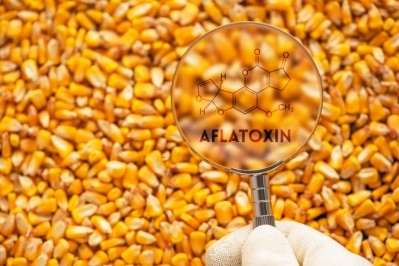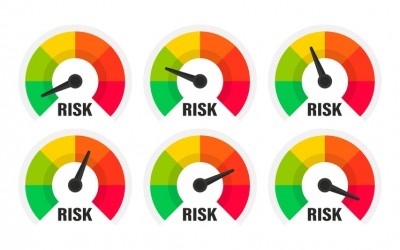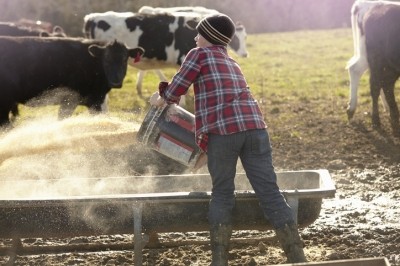Asia Pacific markets the focus of Biomin mycotoxin risk management launch

Zearalenone occurrence is observed on a world-wide basis and poses a global problem for farmed animal production, said Dr Paula Kovalsky, product manager, mycotoxins at Biomin.
The product launch is based on the registration progress in individual countries, she said.
“The goal is to have registrations in all of our markets. The first markets that will receive Mycofix Plus 5.Z with ZENzyme will be Thailand, Taiwan and South Korea followed by Malaysia, Philippines and Vietnam in the coming months, with more by the end of the year,” she told FeedNavigator.
Will Biomin rely on distributors for market penetration in those countries?
“Biomin has a very wide market penetration around the globe. We are currently present with over 40 business units around the world, and the acquisition of Biomin by DSM furthers extends our global reach in delivering innovative solutions to the agriculture sector. In some countries that Biomin is present through distributors we are confident that our close partnerships will accelerate the adoption of ZENzyme especially to protect breeding animals,” said the product manager.
She said that, due to the negative effects of zearalenone on reproduction and the subsequent economic losses, there is a clear need from the market for this kind of product.
Efficacy
ZENzyme, she said, is a patented enzyme that is designed to detoxify zearalenone. It is now part of the Mycofix product line. “Its efficacy in detoxifying zearalenone fast, specifically and irreversibly has been proven in vitro and in vivo and this has been published in peer reviewed journals,” said Kovalsky.
The safety of the resulting non-toxic metabolite produced when ZENzyme acts against zearalenone has been published in a peer reviewed journal after an extensive collaboration with the Veterinary University of Vienna, Austria, she explained.
“With the use of biomarkers we are able to see in feeding trials that ZENzyme significantly reduces zearalenone in livestock.”
The product has also been successfully tested in Brazil, at the SAMITEC institute. “That is a well-known center for analytical, microbiological, and technological solutions and key for product evaluation for the registration process in Latin America.”
Intended customers
Typically, who would be the target customer for this product?
“Animal production stakeholders from all levels including integrators, feed mills and premixers are our main focus. The product is recommended for use in swine, poultry, ruminants and aquaculture, and their offspring.”
When asked what data does Biomin have to indicate the risk level for zearalenone contamination in animal feed in the Asia-Pacific countries in which the product is being launched, she said the risk levels for zearalenone depend not only on its concentration but also on its co-occurrence with other mycotoxins throughout the production phase.
“In the past five years we have observed an occurrence of zearalenone in Asia of 35-88% among all samples that have been analyzed,” added Kovalsky.
The results from the company’s mycotoxin survey for 2020 show that, in Taiwan, 37% of all finished samples analyzed contained zearalenone with a high deoxynivalenol and fumonisin co-contamination, she said.
“In Thailand 34% of the analyzed feed samples were contaminated with zearalenone and a high occurrence of aflatoxin and fumonisin were observed. In South Korea we observed the highest occurrence of zearalenone with 74% of finished feed samples being contaminated with zearalenone and 99% of these samples were co-contaminated with deoxynivalenol.”
Impact on farmed animals
Kovalsky said that zearalenone is a mycoestrogen that can affect all animal species around the world. “However, there are differences in the susceptibility of species towards zearalenone due to species-specific differences in the absorption, distribution, metabolism, and elimination of this mycotoxin.”
Pigs are particularly prone to the effects of zearalenone and are generally considered as the most susceptible species among livestock, due to the particular kinetics, she continued.
“In pigs, the bioavailability of zearalenone is very high and therefore a significant proportion of the ingested toxin reaches the systemic circulation. After ingestion, zearalenone is converted to α- and β-zearalenol (α-ZEL and β-ZEL) in liver or intestinal cells. Those metabolites exert higher (α-ZEL) or lower (β-ZEL) estrogenic activity than zearalenone. The rate of α-ZEL formation, which is comparably high in swine, influences the toxicity of zearalenone.”
In poultry, zearalenone affects egg quality and can increase embryonic mortality leading to reduced hatchability. As far as susceptibility, turkeys are very susceptible to the chronic exposure of zearalenone followed by broiler breeders then layers and ducks, she explained.
“Although ruminants have a natural means to degrade mycotoxins due to their unique digestive systems, this is clearly not beneficial for the animals in the case of zearalenone. ZEN is naturally metabolized to α-zearalenol (α-ZEL) and β-zearalenol (β-ZEL) mainly in the liver but also in the intestine of animals. These metabolites are estrogenic as well, with α-ZEL being up to 60 times more potent than the parental compound zearalenone. Therefore, the natural metabolization of zearalenone to α-ZEL and β-ZEL cannot be considered a detoxification.”















